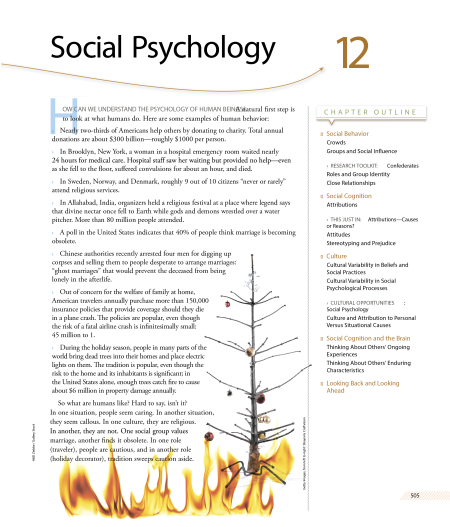Chapter 12. Social Psychology
12.1 Introduction
12.2 Slide 2
Welcome to your Try This! research experience for Chapter 12. This activity deals with the learning of a new foreign language.
In a moment, you will see a number of Chinese-style characters representing words. For now, your job is to pay close attention to the characters Later, you will be asked about your impression of them.
Watch closely as the characters are presented one-by-one on screen. It will take about 3 minutes. Click “Start” when ready to begin.
12.3 Slide 3
12.4 Slide 4
All of the characters you just saw stand for adjectives. Your job now is to guess whether they stand for positive or negative adjectives.
Try not to think too hard about this. Just go with your first impression.
As you are presented with each of 12 characters, you’ll be asked to rate whether the word means something bad or something good, using the following scale.
The screen will advance automatically once you select an answer. When ready to begin, click Start.
12.5 Slide 5
12.6 Slide 6
Thank you for your ratings. The characters you saw are taken from a study done in 1968 by a psychologist Robert Zajonc. The interesting thing about them is they actually have no meaning!
What Zajonc investigated was whether the frequency of presentation would influence people’s liking of each “word.” The characters you and his participants saw were presented with either low frequency (0, 1, or 2 times) or high frequency (5, 10, or 25 times).
Which ones would you guess you rated more positively: the low or high frequency “words”?
Go to the next screen to see your ratings in relation to frequency of presentation and learn about the outcome of Zajonc’s study.
12.7 Slide 7
Here is how you rated each of the characters. They are listed along the x-axis from low frequency of presentation to high frequency.
If you are like Zajonc’s participants, you tended to rate the high frequency “words” more positively than the low frequency words.












12.8 Slide 8
Why would frequency of exposure have such effects? Why would people “like” a character they see more often and therefore judge it to represent a positive adjective? Return to the text to find out!
This activity inspired by and based on:
Zajonc, R. B. (1968). Attitudinal effects of mere exposure. Journal of Personality and Social Psychology Monograph, 9 (Supp. 2, Part 2, 1-28).

